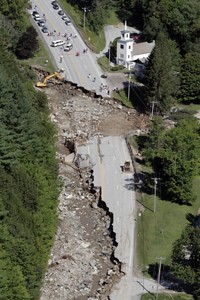Advertisement
Grab your lab coat. Let's get started
Welcome!
Welcome!
Create an account below to get 6 C&EN articles per month, receive newsletters and more - all free.
It seems this is your first time logging in online. Please enter the following information to continue.
As an ACS member you automatically get access to this site. All we need is few more details to create your reading experience.
Not you? Sign in with a different account.
Not you? Sign in with a different account.
ERROR 1
ERROR 1
ERROR 2
ERROR 2
ERROR 2
ERROR 2
ERROR 2
Password and Confirm password must match.
If you have an ACS member number, please enter it here so we can link this account to your membership. (optional)
ERROR 2
ACS values your privacy. By submitting your information, you are gaining access to C&EN and subscribing to our weekly newsletter. We use the information you provide to make your reading experience better, and we will never sell your data to third party members.
Environment
Restoring The Gulf With Oil Money
Penalties from the Deepwater Horizon disaster may remedy decades of ecological damage
by Jeff Johnson
June 3, 2013
| A version of this story appeared in
Volume 91, Issue 22

First came the oil, and now comes the money.
COVER STORY
Restoring The Gulf With Oil Money
That’s a fact not likely to be lost on the residents of the Gulf of Mexico who want retribution for pain and suffering caused by the BP Deepwater Horizon oil disaster three years ago. Several funds have been established to distribute oil-spill penalties to the five Gulf Coast states. But the exact amount of money and the specific projects have yet to be solidified.
So far, BP says, it has spent or committed to fork over at least $28.7 billion in spill-related spending. More than $14 billion of that, BP says, went to contain and stop the flow of oil and clean up pollution in the immediate aftermath of the U.S.’s largest-ever oil spill, which dumped more than 200 million gal of oil into the surrounding environment and killed 11 workers. But those billions are just a down payment.
Eventually, BP is likely to spend more than $40 billion to cover a wide range of spill-related compensation. A long, complicated, multipart federal trial in New Orleans is getting under way that will determine exactly how much the company pays. And where exactly the resulting funds will go is only now being hammered out.
Because of recommendations from expert commissions and national legislation, the bulk of the eventual spill penalties is expected to be earmarked for the ecological restoration of the Gulf of Mexico. Depending on the trial’s outcome, restoration funds could exceed $20 billion. Gulf advocates are eyeing the possibility of using these oil industry dollars to remediate decades of human-made damage to one of the world’s most productive and valuable ecosystems. However, a debate is likely to emerge in the years ahead over using these restoration funds either to rebuild the Gulf’s ecology or to enhance its economy.
Louisiana, the state hardest hit by the BP oil spill, is likely to benefit the most, and it already has an ecology-focused plan for using the money. For a decade, state officials, scientists, residents, and a host of interest groups have been working to develop a Louisiana coastal management plan. It was completed last year.
An expensive and ambitious part of the state plan aims to redirect Mississippi River freshwater and muddy sediments. The flow would rebuild barrier islands, marshes, and estuaries eroded by Gulf storms and currents and chewed up by oil and gas pipelines and drilling rigs over the past 70-plus years.
“Louisiana to its credit was wise to select marsh and estuary restoration,” notes Ian MacDonald, a Florida State University oceanographer with long experience in the Gulf. He applauds the fact that the oil funds are available and that the state appears unified in seeking them.
The availability of these funds was triggered by the recommendations of two expert panels. Six months after the spill, a committee appointed by President Barack Obama and headed by Navy Secretary Ray Mabus recommended that a fund be set aside for Gulf restoration. Money would come by redirecting 80% of Clean Water Act penalties from the spill to a region-wide restoration fund. In the past, such penalties would have gone to the U.S. Treasury.
Two years ago, the National Commission on the BP Deepwater Horizon Oil Spill & Offshore Drilling backed up Mabus’ recommendation and urged that a fund of at least $500 million a year for 30 years be set aside to restore the Gulf. The restoration would include both the direct impact of the BP spill and “the decades of degradation that preceded it,” in the words of the commission.
Congress and the President turned this recommendation into a law, RESTORE, or the Resources & Ecosystems Sustainability, Tourist Opportunities & Revived Economies of the Gulf Coast States Act, in July 2012. Depending on the outcome of the ongoing trial, these penalties could be huge, from $4 billion to $18 billion.
Under RESTORE, of the 80% of Clean Water Act penalties, the five affected states will split 35% of the funds equally; 30% will be distributed by a council of state and federal officials for projects to restore and protect natural resources along the lines of a Gulf-wide comprehensive plan to be developed by the Gulf Coast Ecosystem Restoration Council; and 30% will be divided among the states by the council to support ecological and economic restoration. The last 5% will support Gulf research.
This money may be the key to Louisiana’s ecological restoration hopes and its plan to replumb the Mississippi. “Right now the Mississippi River is in a strait-jacket and confined by levees, and the river sediment runs down a single large channel and winds up on the edge of the continental shelf,” says David P. Muth, director of the National Wildlife Federation’s Mississippi River Delta Restoration Program, a regional nonprofit group. Muth also worked on Louisiana coastal issues for 30 years with the National Park Service. “We have to reestablish the connection between the river and the delta,” he adds.
The state estimates that some 1,900 sq miles of marshes and estuaries have been lost to erosion over the past 70 years, and sea level rise will only intensify the loss. Diverting fast-moving sediment-laden river flow to marshes, barrier islands, and collapsed areas in the delta could help remedy this. But revising the river flow—and configuring the change to allow deep-water shipping to continue to the port of New Orleans—is an engineering feat of massive proportions, Muth notes. So far, he notes, the plan is just conceptual.
Beyond the funds associated with RESTORE, there are two other pots of money for the Gulf.
Smallest and simplest is a pot holding funds from a criminal settlement between the Department of Justice, BP, and rig owner Transocean. Half the settlement, some $2.5 billion, has been set aside in the Gulf Environmental Benefit Fund to be administered by the National Fish & Wildlife Foundation, a congressionally created nonprofit organization.
The foundation announced on May 13 that $1.3 billion would be used to restore Louisiana’s barrier islands and fund diversion projects for the Mississippi and Atchafalaya Rivers. Another $365 million each is earmarked for Alabama, Florida, and Mississippi for natural resource projects and another $203 million would be used for similar projects in Texas.
The final pot is a yet-to-be-determined amount that will come from the Oil Pollution Act of 1990. The act will require BP and others responsible for the mess to pay to fix damaged natural resources. Five federal agencies and the five Gulf states are currently assessing natural resource spill damages. This too will eventually be debated in court. Meanwhile, BP created a $1 billion fund to be used for “early restoration projects” to get the reclamation process started. So far, trustees of this fund have proposed $671 million for 38 projects. The projects will be subject to public review.
For Louisiana, $320 million to restore barrier islands and marshland will come from this fund. Combining this proposal with the $1.25 billion in criminal penalties, Louisiana will have $1.5 billion to move ahead with its huge restoration project, state officials have noted.
Other early restoration projects are tied less to the environment and more to economic damages, which include the cost of lost use and services. For instance, Alabama wants $85 million for a lodge and research center, Florida seeks ferry boats and improved piers and boat landings, and other states have proposed artificial reefs to enhance sports fishing opportunities as well as other projects of little permanent ecological value.
The projects are all still on various drawing boards, and conflicts will be resolved by a committee of state and federal officials. How ecological and economic priorities are set may signal the power of various sides when it comes to siphoning off the gusher of penalty money expected in the Gulf.





Join the conversation
Contact the reporter
Submit a Letter to the Editor for publication
Engage with us on Twitter